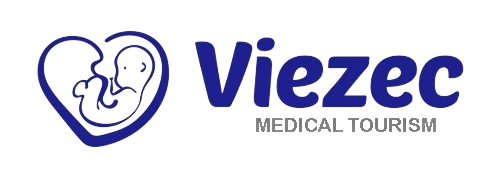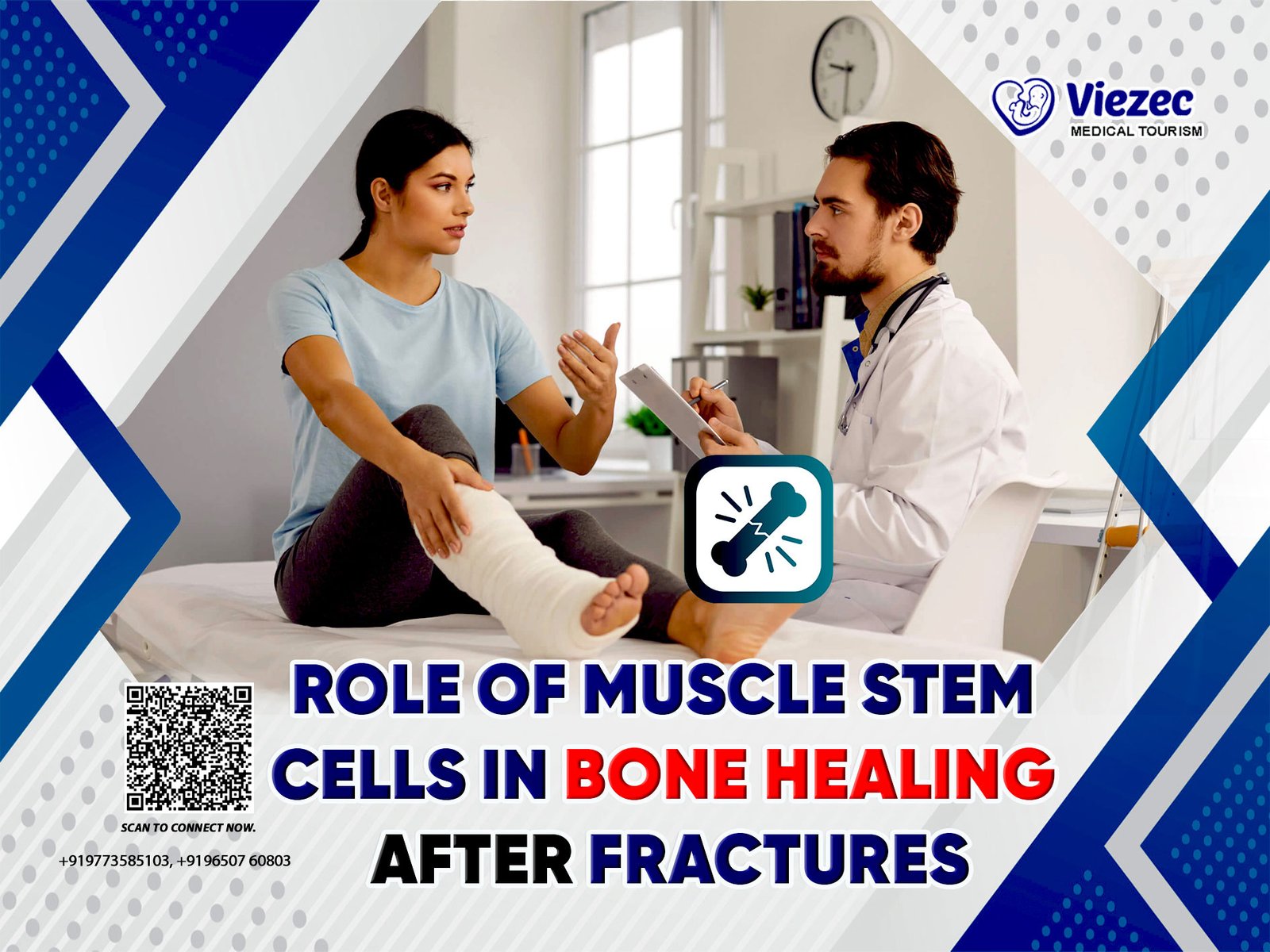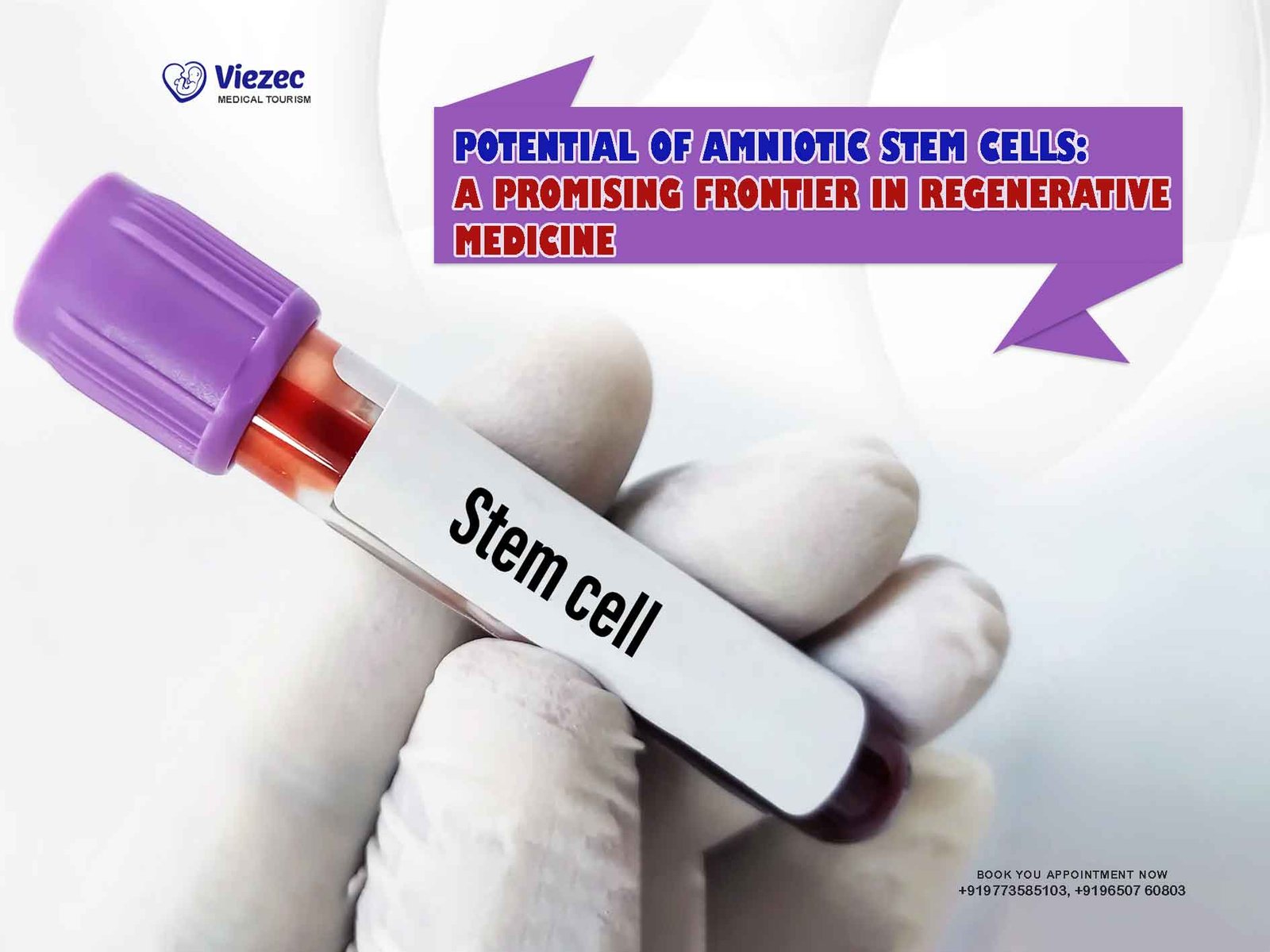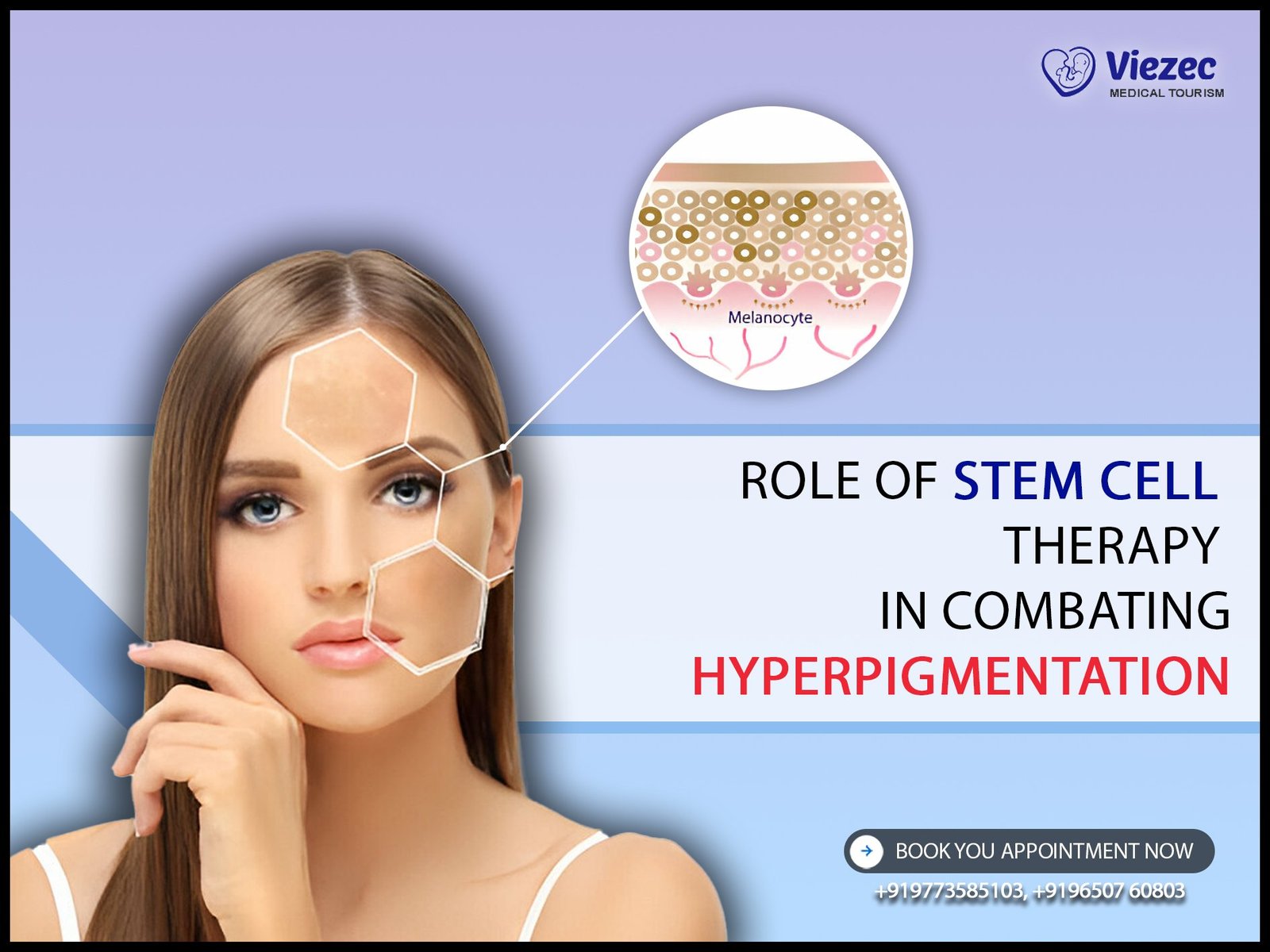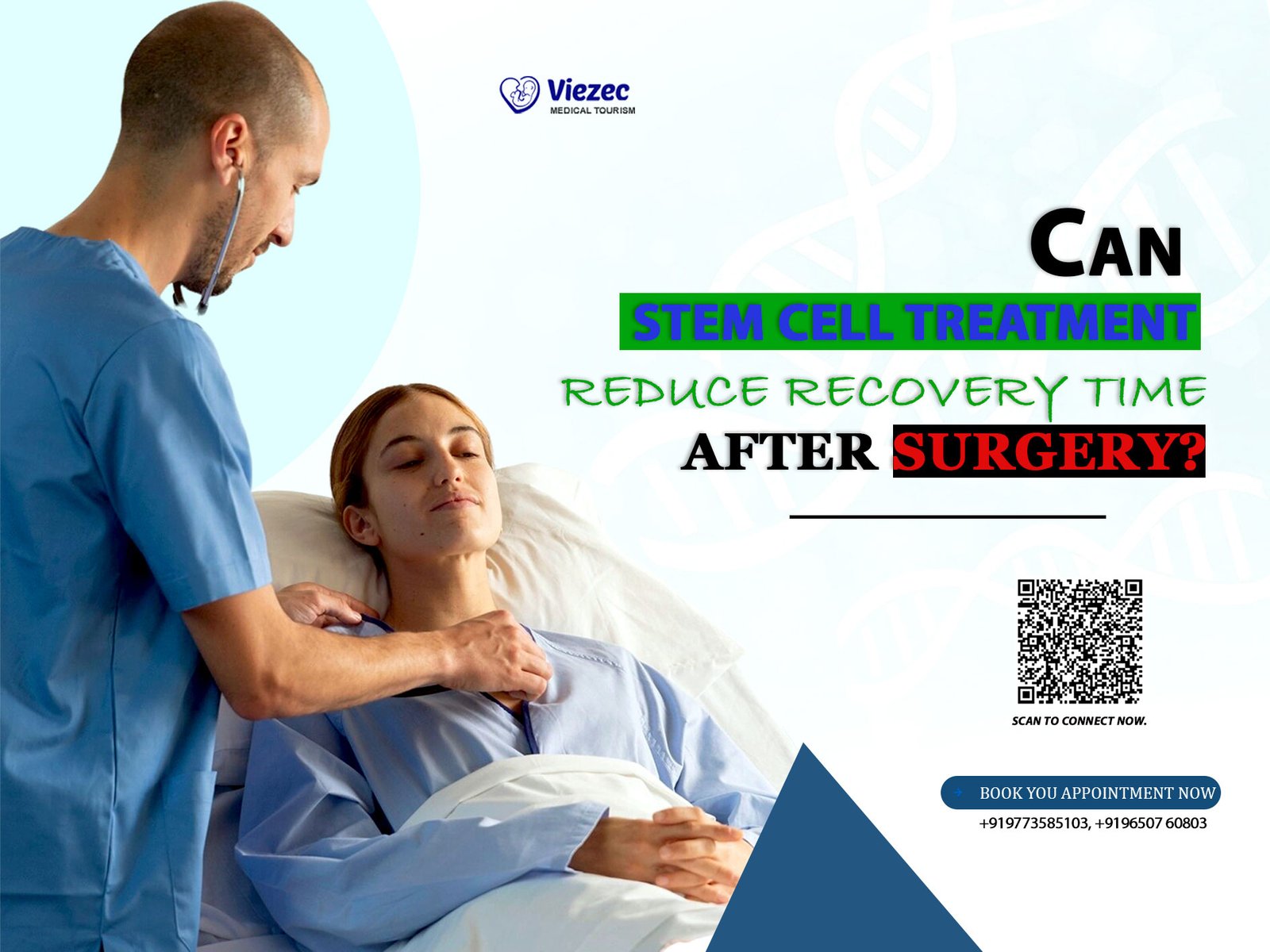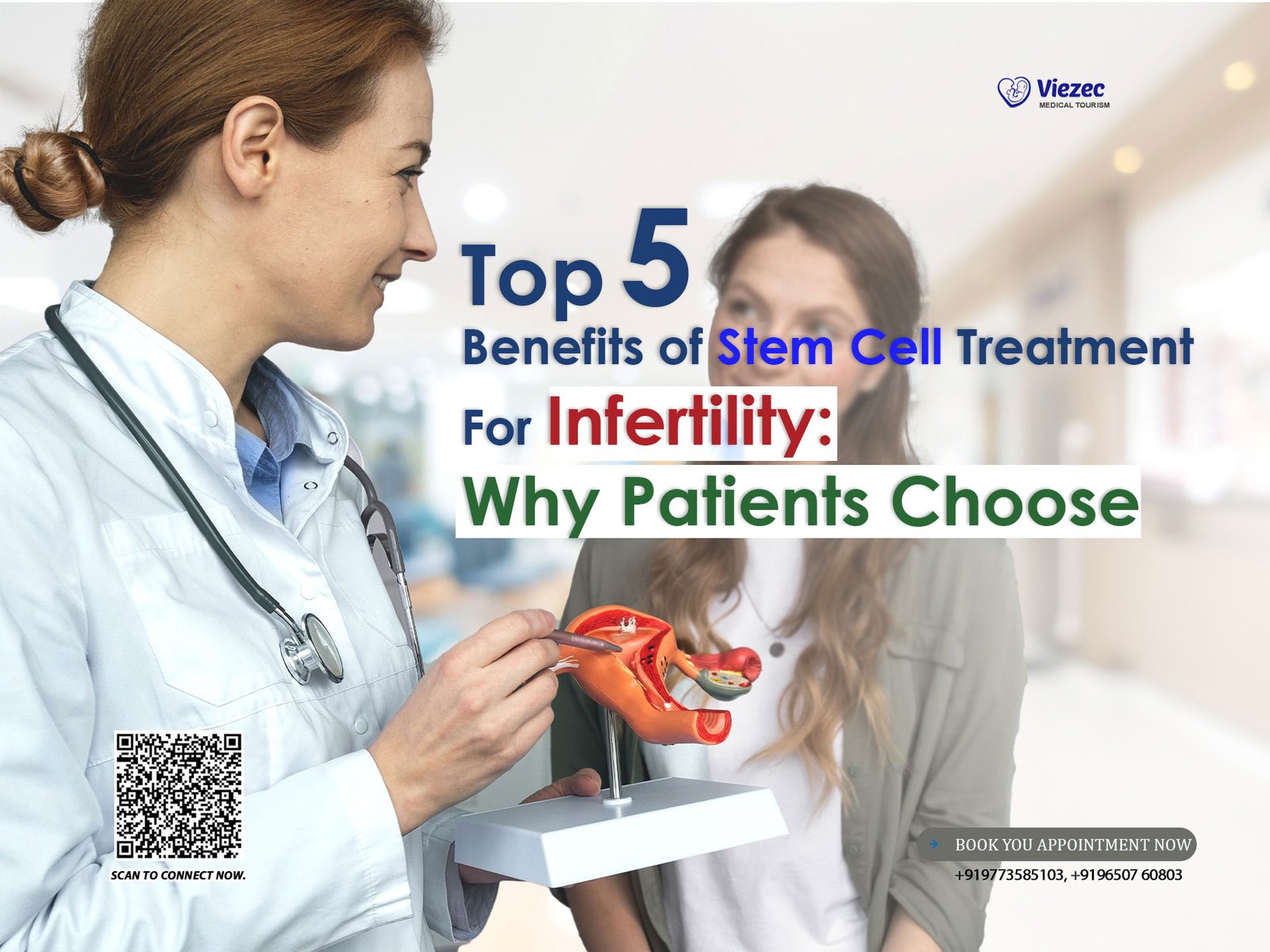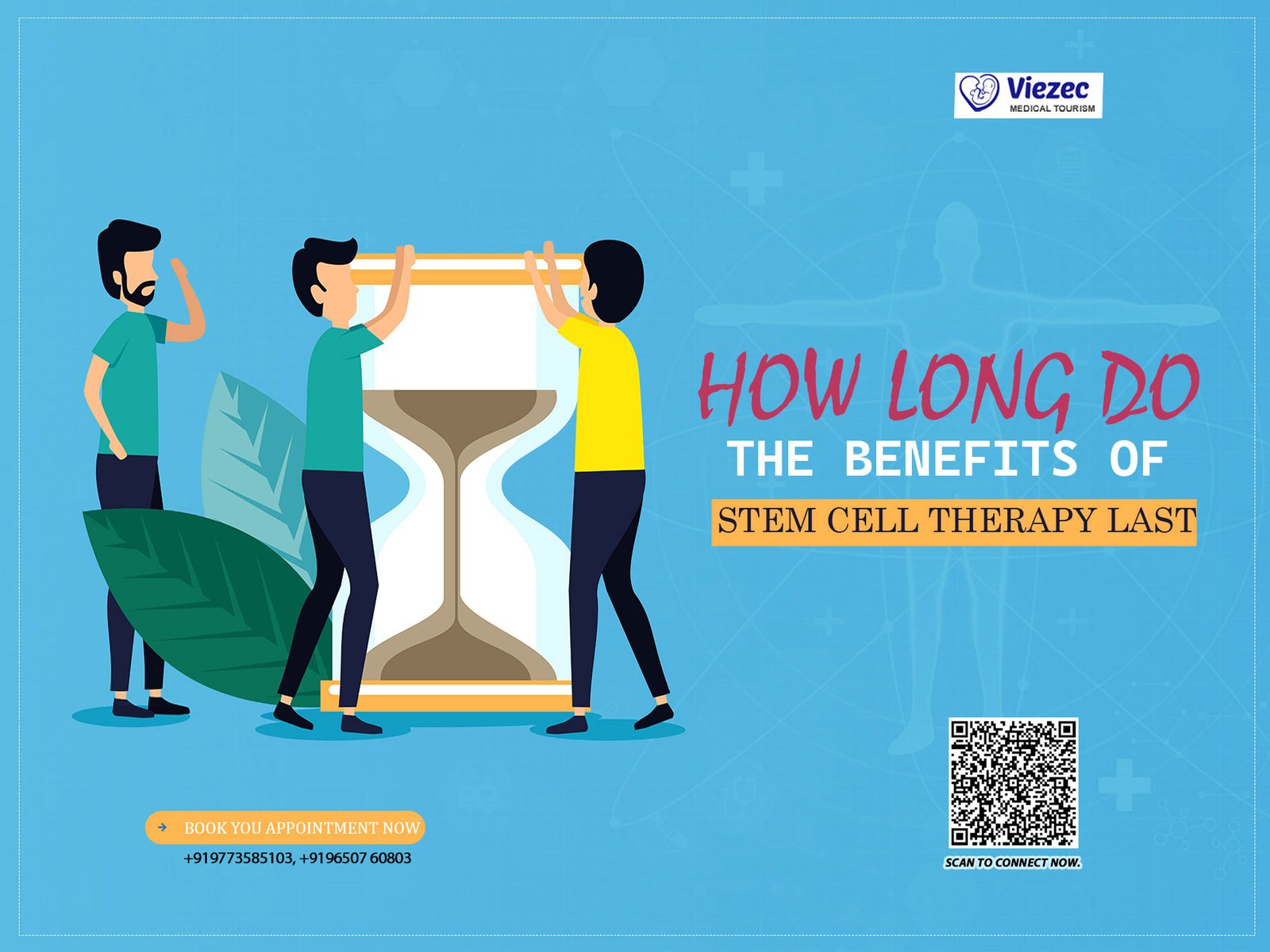Fractures are a common musculoskeletal injury, affecting millions of people worldwide. While conventional treatments such as casting, surgical fixation, and physiotherapy are effective, recent advances in regenerative medicine have highlighted the critical role of muscle stem cells in bone repair and accelerated healing. Understanding this relationship opens new avenues for improving recovery outcomes for patients across India and globally.
Understanding Muscle Stem Cells
Muscle stem cells, also known as satellite cells, are specialized cells located between the basal lamina and muscle fiber membrane. These cells remain in a quiescent state under normal conditions but become activated during muscle injury or stress. Once activated, satellite cells can proliferate and differentiate into mature muscle cells, contributing to tissue repair.
Recent research indicates that these cells also influence bone healing. When a fracture occurs, the surrounding muscles and their stem cells play a pivotal role in the repair process, not just by supporting structural stability but also by releasing growth factors and signaling molecules that facilitate bone regeneration.
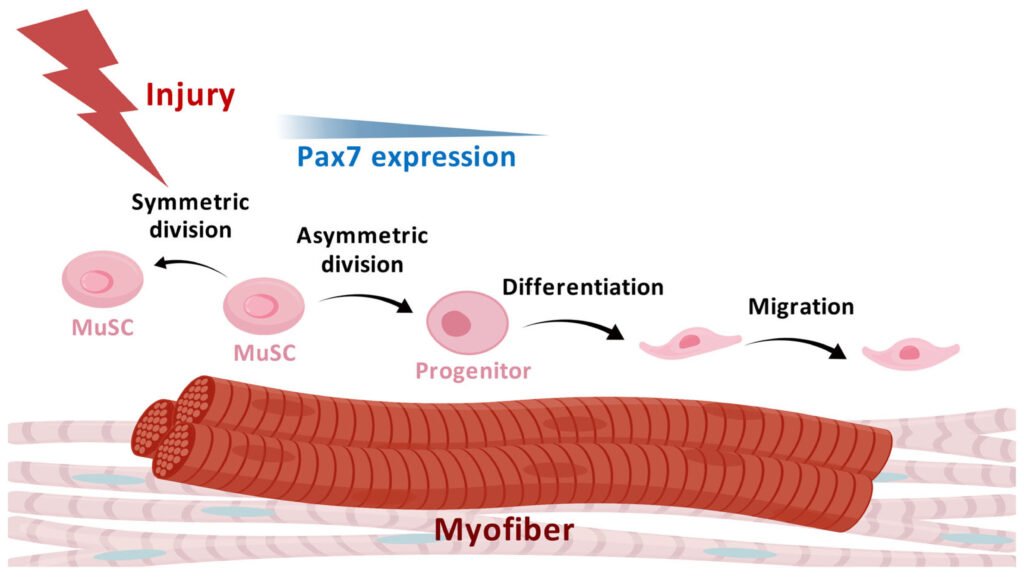
Connection Between Muscle Stem Cells and Bone Healing
Bone repair is a highly coordinated biological process involving inflammation, cellular recruitment, and tissue remodeling. Muscle stem cells contribute to this process through multiple mechanisms:
-
Paracrine Signaling: Activated muscle stem cells release growth factors such as VEGF (vascular endothelial growth factor) and BMPs (bone morphogenetic proteins), which enhance the recruitment and differentiation of bone-forming cells, promoting fracture repair.
-
Microenvironment Support: Healthy muscle tissue surrounding a fracture provides a vascular-rich environment, ensuring that nutrients and oxygen reach the injury site. Muscle stem cells maintain this microenvironment, indirectly supporting bone regeneration.
-
Direct Differentiation Potential: Emerging studies suggest that under specific conditions, muscle stem cells can transdifferentiate into osteogenic cells, directly contributing to new bone formation. While this is an area of ongoing research, it highlights the versatility of muscle-derived stem cells in musculoskeletal repair.
How Fractures Heal Naturally
Bone healing is a remarkable natural process, carefully coordinated by the body to restore strength and function after a fracture. Understanding this process is essential for patients considering advanced therapies, including stem cell treatments.
1. Inflammation: Immediately following a fracture, blood vessels around the break are damaged, forming a hematoma (blood clot). This initiates inflammation, which attracts immune cells to remove debris and release growth factors that stimulate tissue repair. Pain, swelling, and warmth are common indicators of this stage.
2. Soft Callus Formation: Within a few days, fibroblasts and chondroblasts create a soft, cartilage-like bridge between bone fragments. This soft callus stabilizes the fracture site and serves as a scaffold for new bone development.
3. Hard Callus Formation: Over the next 2–6 weeks, the soft callus is gradually replaced by woven bone through the activity of osteoblasts. This strengthens the fracture and begins restoring the bone’s structural integrity.
4. Remodeling: Finally, the woven bone matures into lamellar bone, reshaping and reinforcing the fracture site. Osteoclasts remove excess tissue while osteoblasts rebuild bone, ensuring long-term durability.
This natural healing sets the foundation for adjunctive therapies, such as muscle stem cell treatments, which can enhance repair speed and overall recovery outcomes.
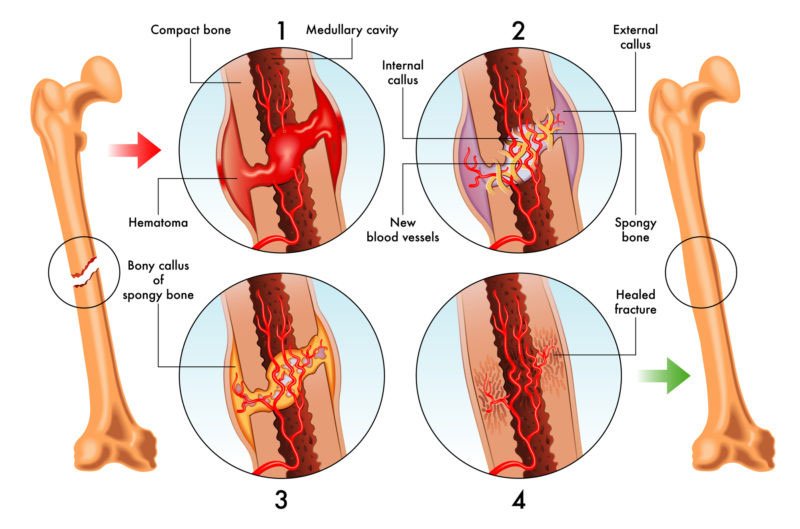
Why Muscle Health Matters in Fracture Recovery
Muscles surrounding a fractured bone play a critical role in the healing process. Healthy muscle tissue not only stabilizes the fracture site but also actively supports bone repair through biological signaling and blood supply.
When a bone breaks, nearby muscles and their satellite cells (muscle stem cells) become activated. These cells release growth factors, such as vascular endothelial growth factor (VEGF) and bone morphogenetic proteins (BMPs), which enhance the recruitment of bone-forming cells and stimulate tissue regeneration. In essence, muscles act as a biological support system, promoting faster and more effective fracture healing.
Moreover, strong and well-nourished muscles maintain vascularization, ensuring the fracture site receives sufficient oxygen and nutrients necessary for repair. Muscle atrophy or weakness, often seen after immobilization, can slow healing and increase recovery time.
For patients, combining muscle conditioning with conventional fracture management or regenerative therapies, such as stem cell treatments, can optimize outcomes. Maintaining muscle health through gentle physiotherapy, proper nutrition, and controlled exercise creates the ideal environment for bones to heal efficiently and regain full function.
The Role of Muscle Stem Cells in Bone Healing
Muscle stem cells, also known as satellite cells, are specialized cells that reside within skeletal muscles and remain dormant under normal conditions. When a fracture occurs, these cells become activated, contributing not only to muscle repair but also to bone healing.
Research shows that activated muscle stem cells release growth factors and cytokines, including VEGF (vascular endothelial growth factor) and BMPs (bone morphogenetic proteins). These molecules enhance the recruitment and differentiation of bone-forming cells, creating a supportive microenvironment for fracture repair. This paracrine signaling accelerates the formation of new bone and reduces recovery time.
In addition, this type of stem cells help maintain the vascular-rich environment around the fracture, ensuring adequate oxygen and nutrient supply—critical for effective bone regeneration. Some studies also suggest that under specific conditions, muscle cells may directly differentiate into osteogenic (bone-forming) cells, further supporting structural repair.
For patients in India and worldwide, therapies that leverage muscle stem cells are emerging as promising regenerative solutions for fractures, particularly in cases of delayed healing or complex injuries. Integrating muscle stem cell therapies with conventional fracture management can optimize outcomes, reduce complications, and improve long-term bone and muscle health.
Stem Cell Therapy for Fractures: Procedure and Benefits
Stem cell therapy is an innovative approach that enhances the body’s natural healing processes, particularly for fractures that are slow to heal or involve complex bone injuries. At the core of this therapy is the use of autologous or allogeneic stem cells, which can include muscle stem cells, bone marrow-derived cells, or adipose-derived stem cells.
Procedure:
-
Assessment: A thorough evaluation of the fracture and overall health is conducted by a qualified clinician.
-
Stem Cell Harvesting: Stem cells are collected, often from the patient’s own bone marrow or muscle tissue, ensuring compatibility and reducing the risk of immune reactions.
-
Processing and Activation: The harvested cells are processed to concentrate the regenerative elements and may be activated to enhance their healing potential.
-
Targeted Delivery: Stem cells are injected precisely at the fracture site using imaging guidance, promoting localized repair and tissue regeneration.
Benefits:
-
Accelerates bone healing and reduces recovery time
-
Enhances structural integrity and reduces the risk of re-fracture
-
Supports surrounding muscle and tissue regeneration
-
Minimizes the need for invasive surgeries in suitable cases
Stem cell therapy, combined with physiotherapy and proper nutrition, represents a cutting-edge, scientifically backed option for patients seeking faster and more effective fracture recovery. Clinics like Viezec in India specialize in these therapies, ensuring safety, compliance, and personalized care.
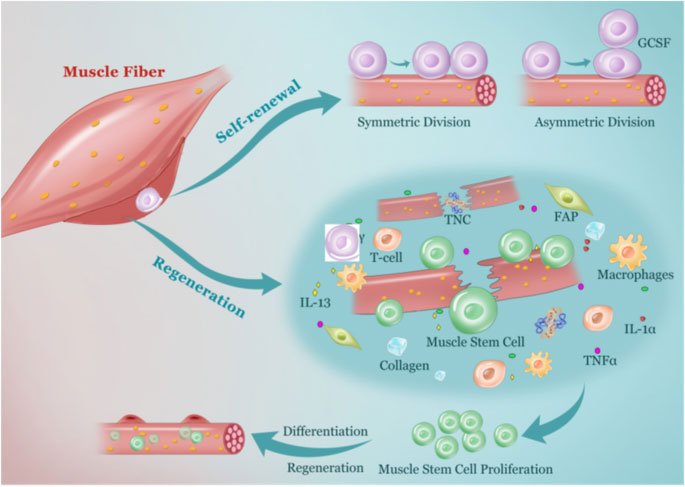
Who Can Benefit from Stem Cell Therapy After a Fracture?
Stem cell therapy for fractures is increasingly recognized as a promising approach to enhance bone healing, particularly for individuals who may experience delayed recovery with conventional treatments.
Elderly patients often face slower bone regeneration due to age-related decline in cellular activity and bone density. Stem cell therapy can help stimulate bone repair, potentially reducing recovery time and improving mobility.
Individuals with non-healing or complex fractures, such as those resulting from severe trauma, diabetes, or osteoporosis, may also benefit. These fractures can remain unhealed despite surgical intervention or casting. Introducing stem cells can provide the necessary regenerative support to jumpstart bone repair and restore function.
Athletes or physically active individuals recovering from fractures may seek faster, more efficient healing to return to their sport. Stem cell therapy can enhance tissue regeneration, improve muscle-bone interaction, and support optimal recovery while minimizing downtime.
While stem cell therapy shows great potential, it is important to consult a qualified regenerative medicine specialist to determine suitability based on age, health status, and fracture type. At Viezec, we focus on safe, evidence-based treatments tailored to each patient’s needs, helping accelerate recovery and improve overall bone health.
Safety and Regulations of Stem Cell Therapy in India
Stem cell therapy is a rapidly advancing field in regenerative medicine, and ensuring patient safety is paramount. In India, stem cell treatments are regulated by the Indian Council of Medical Research (ICMR) and the Central Drugs Standard Control Organization (CDSCO). These bodies provide guidelines for the clinical use of stem cells, ensuring that therapies adhere to strict standards for collection, processing, and transplantation.
Only treatments conducted in licensed and accredited facilities under trained medical supervision are considered safe. Clinical trials in India follow international protocols to evaluate both efficacy and potential risks, ensuring patients receive scientifically validated therapies. Additionally, autologous stem cell treatments—where a patient’s own cells are used—further minimize risks such as immune rejection or disease transmission.
At Viezec, we strictly follow these regulatory guidelines, maintaining transparency about treatment protocols, expected outcomes, and potential limitations. By prioritizing compliance, safety, and evidence-based practices, patients can access innovative fracture healing solutions with confidence.
Understanding the regulatory framework and safety standards empowers patients to make informed decisions about stem cell therapy and underscores the trustworthiness and credibility of certified providers in India.
Stem Cell Therapy in Bone Repair and Regeneration
Muscle injuries often occur alongside bone fractures or as a result of trauma, overuse, or degenerative conditions. In such cases, stem cell therapy has emerged as a promising approach to restore muscle strength, structure, and function. This treatment works by stimulating the body’s own regenerative processes to repair damaged or weakened muscle tissue.
Muscle regeneration primarily relies on muscle stem cells, also known as satellite cells, which remain dormant until injury occurs. When activated, these cells multiply and differentiate into new muscle fibers, replacing damaged tissue. Stem cell therapy enhances this natural process by delivering a concentrated dose of autologous stem cells (derived from the patient’s own tissues) directly to the affected area. These cells release growth factors and cytokines that accelerate healing, reduce inflammation, and improve muscle fiber formation.
For patients with chronic injuries, muscle atrophy, or slow post-fracture recovery, stem cell treatment can significantly improve mobility, endurance, and recovery time.
At Viezec, we follow a safe, evidence-based approach to muscle regeneration therapy, combining advanced cellular techniques with personalized rehabilitation plans to help patients regain optimal musculoskeletal health and functionality.
Lifestyle Tips to Support Fracture Healing
Fracture recovery involves more than medical treatment—your lifestyle plays a crucial role in optimizing bone repair. Implementing targeted strategies can accelerate healing, reduce complications, and support long-term musculoskeletal health.
1. Balanced Nutrition:
A diet rich in calcium, vitamin D, magnesium, and protein supports bone regeneration. Include dairy products, leafy greens, nuts, lean meats, and fish. Vitamin C from fruits like oranges and kiwis promotes collagen formation, which strengthens the bone matrix.
2. Physiotherapy:
Early, guided physiotherapy improves mobility, muscle strength, and joint function, reducing stiffness and promoting proper alignment during healing. Certified physiotherapists can tailor exercises to your injury type and recovery stage.
3. Supplements:
When dietary intake is insufficient, supplements like calcium, vitamin D, and omega-3 fatty acids can support bone metabolism. Always consult a physician or a stem cell specialist before starting supplementation, especially if you are undergoing regenerative therapy.
4. Safe Exercise and Activity:
Light, controlled movements enhance blood flow, oxygen delivery, and nutrient transport to the fracture site. Avoid high-impact activities until cleared by your doctor. Gradual weight-bearing exercises, as recommended by your healthcare provider, can prevent muscle atrophy and improve healing outcomes.
By integrating these lifestyle measures with medical or stem cell-based treatments, patients can maximize recovery, minimize complications, and regain strength faster.
Frequently Asked Questions
How long does it take for bone stem cells to aid healing?
Bone and muscle stem cells typically contribute to fracture repair within weeks to months, depending on the fracture type, age, and overall health. Stem cell therapy can accelerate this process by enhancing cellular regeneration.
Can stem cell therapy replace surgery for fractures?
Stem cell therapy complements conventional treatments and may reduce the need for surgery in certain cases, but complex fractures often still require surgical intervention for structural stability.
Are there side effects of muscle stem cell therapy?
When performed under medical supervision, stem cell therapy is generally safe, with minimal risks such as mild swelling or soreness at the injection site. Serious complications are rare.
How are muscle stem cells obtained for therapy?
They are usually harvested from the patient’s own muscle tissue (autologous), processed in a lab, and reintroduced at the injury site to support regeneration.
Does stem cell therapy completely heal bones?
Stem cells support and enhance natural bone healing but work best alongside standard orthopedic care, such as immobilization or physiotherapy.
Is stem cell therapy painful?
Most procedures involve local anesthesia, and discomfort is minimal and temporary.
How soon can I resume normal activities?
Activity resumption depends on fracture type and healing progress, typically guided by a specialist orthopedic or regenerative medicine doctor.
What are muscle stem cells called?
Muscle stem cells are known as satellite cells. They are located between the muscle fiber membrane and the basal lamina, remaining inactive until the muscle experiences injury or stress. Once activated, these cells multiply and transform into new muscle fibers, helping the muscle repair and grow stronger. Satellite cells are essential for muscle regeneration, recovery after injury, and maintaining muscle health throughout life.
Can bone regenerate after osteoporosis?
Yes, bone can regenerate to some extent after osteoporosis, but the process is slower and less efficient compared to healthy bone. Osteoporosis weakens bone density and structure, making it prone to fractures. However, with proper treatment, nutrition, exercise, and in some cases, regenerative therapies like stem cell treatment, bone-forming cells (osteoblasts) can help restore some bone strength. Early intervention and medical guidance are key to preventing further bone loss.
How does the body heal muscles over time?
When muscle fibers are injured, the body activates satellite cells to repair the damage. These cells divide, fuse with existing fibers, and form new muscle tissue. Over time, this process restores the muscle’s strength and function. Adequate rest, protein-rich nutrition, hydration, and physiotherapy are vital to support healing. In cases of severe injury or chronic muscle loss, stem cell therapy can enhance the regeneration process and improve recovery outcomes.
Conclusion
Muscle stem cells play a vital role in supporting bone healing after fractures by releasing growth factors, maintaining a healthy tissue environment, and potentially contributing directly to new bone formation. While conventional treatments remain essential, regenerative therapies harnessing muscle stem cells offer promising avenues for faster, more effective recovery. At Viezec, we combine scientific expertise with advanced stem cell procedures to support patients in India seeking enhanced fracture healing. Understanding and leveraging the regenerative potential of muscle and bone stem cells can significantly improve outcomes, reduce recovery time, and restore long-term musculoskeletal health.
